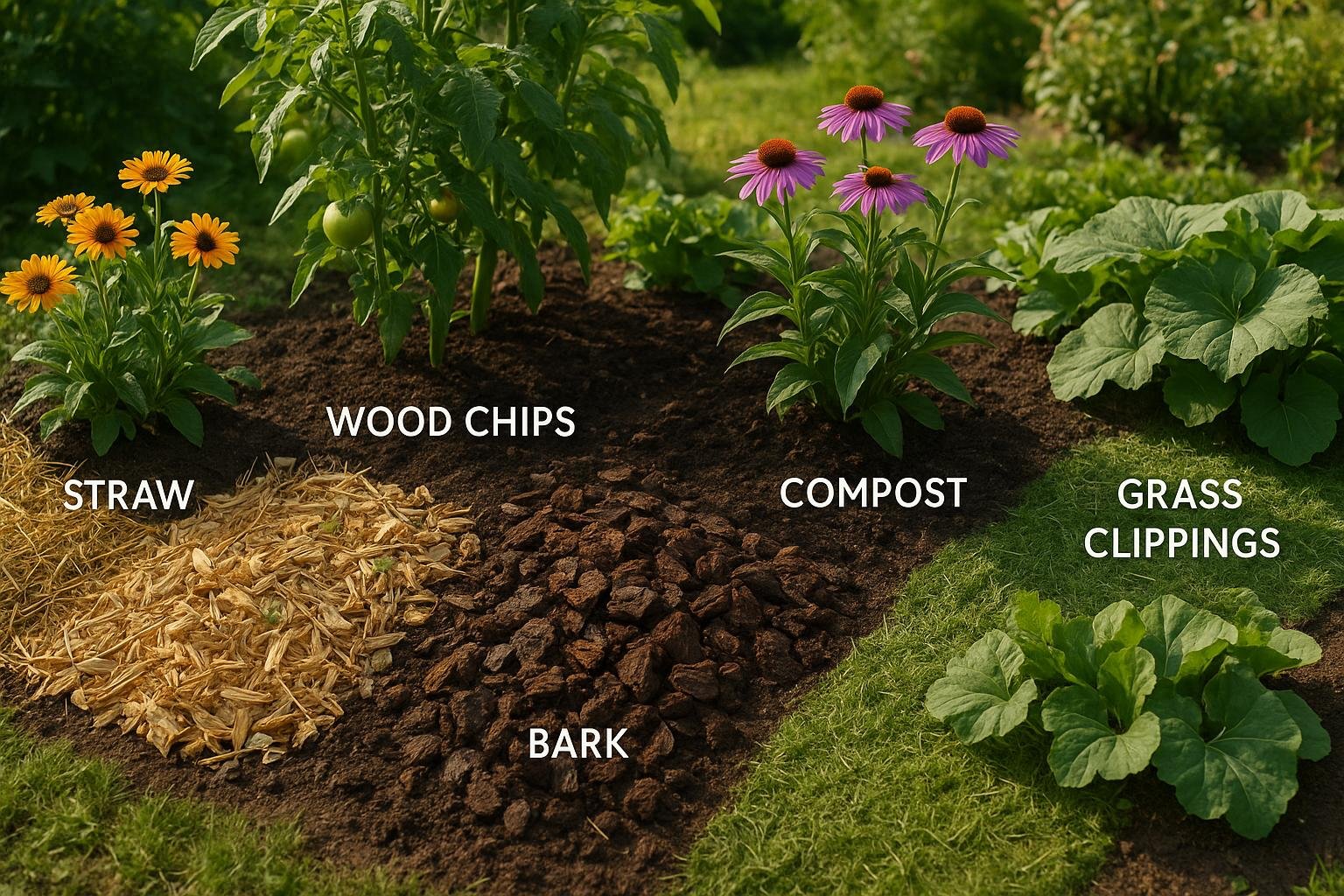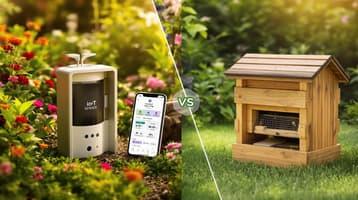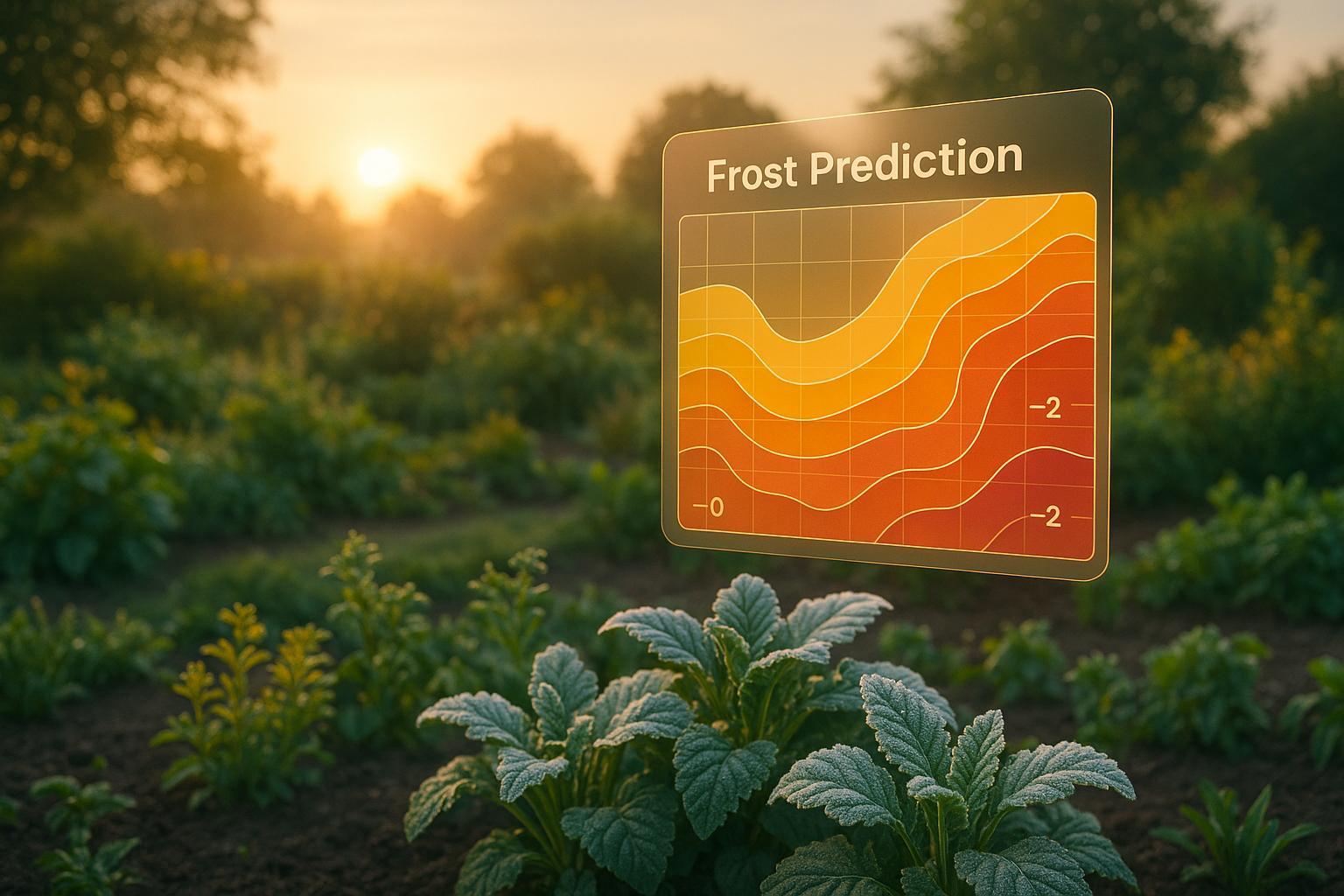Top 5 Mulch Types for Sustainable Gardening

Eco-friendly mulch offers a natural way to improve your garden's health while supporting the environment. From retaining moisture to reducing weeds and enriching soil, choosing the right mulch can make a big difference. Here's a quick overview of the top 5 options:
- Fallen Leaf Mulch: Free, nutrient-rich, and great for flower beds and vegetable gardens, but needs frequent reapplication.
- Pine Bark & Pine Needles: Long-lasting, ideal for acid-loving plants, and effective for slopes.
- Compost Mulch: Provides immediate nutrients, perfect for vegetable gardens and new plantings, but decomposes quickly.
- Mixed Hardwood Mulch: Durable and visually appealing, suitable for pathways, tree bases, and perennial beds.
- Utility & Eucalyptus Mulch: Slow to decompose, great for ornamental beds and dry climates, with eucalyptus offering pest-repelling properties.
These mulches vary in lifespan, maintenance needs, and suitability for different plants and climates. Choose based on your garden's specific requirements for the best results.
Quick Comparison:
| Mulch Type | Lifespan | Best Uses | Maintenance |
|---|---|---|---|
| Fallen Leaf Mulch | 6–12 months | Flower beds, vegetable gardens | High |
| Pine Bark & Pine Needles | 12–18 months | Acid-loving plants, slopes | Moderate |
| Compost Mulch | 3–6 months | Vegetable gardens, annual beds | High |
| Mixed Hardwood Mulch | 18–24 months | Pathways, tree bases, perennials | Low to Moderate |
| Utility & Eucalyptus Mulch | 24–36 months | Ornamental beds, dry climates | Low |
Understanding each type's benefits and limitations ensures your garden thrives while staying eco-friendly.
Top 5 Types Of Garden Mulch and How To Use Them

1. Fallen Leaf Mulch
Fallen leaf mulch turns naturally shed leaves into a rich, soil-boosting material. Imagine this: a single acre of forest can produce up to two tons of fallen leaves each year [2]. That's a massive supply of organic matter that can work wonders for your garden beds.
Nutrient Enrichment
Leaves hold onto 50–80% of their original nutrients, making them a treasure trove of macronutrients and micronutrients [2]. Packed with nitrogen, phosphorus, potassium, calcium, magnesium, iron, and manganese [4], they also contain essential trace minerals [4]. As earthworms, fungi, and bacteria break down the leaves into humus, these nutrients are slowly released into the soil [1]. This natural process acts like free fertilizer, enriching the soil while improving its structure, aeration, and drainage [3].
Decomposition Rate
The speed at which fallen leaf mulch decomposes depends on factors like the type of leaves, moisture levels, and soil conditions. Shredding the leaves can accelerate the process, ensuring a steady release of nutrients [1]. This gradual breakdown not only nourishes the soil but also makes it a practical and eco-friendly alternative to synthetic fertilizers.
Sustainability
Using fallen leaves as mulch is an eco-conscious choice. It recycles a natural resource, reduces landfill waste, and lessens the need for synthetic fertilizers [5]. According to the NRCS:
Leaves create a natural mulch that helps to suppress weeds while fertilizing the soil as it breaks down [6].
Beyond its benefits for soil, fallen leaves also provide a winter habitat for wildlife like lizards, birds, frogs, turtles, and insects [6]. The Webster Groves Green Space and Sustainability Commissions highlight another perk:
Fallen leaves have the same weed suppression and moisture retention properties of shredded wood mulch - and they're free [7].
Best Uses
Spread a 2- to 3-inch layer of leaves in flower beds to keep weeds at bay and lock in moisture for perennials and annuals [8]. In vegetable gardens, placing leaves between rows supports soil health and protects young plants from sudden temperature shifts. Around trees and shrubs, raking leaves back under the canopy mimics the natural cycle of decomposition, creating a micro-environment that benefits the plants [3].
Fallen leaves also work well as a soft, natural cover for garden paths. In raised beds and container gardens, shredded leaf mulch helps the soil retain moisture [8]. For winter protection, apply a thicker 3- to 6-inch layer after the first hard freeze to insulate crops and shield root systems [9]. Just be sure to keep mulch 2 to 3 inches away from plant stems and tree trunks to avoid rot and pest problems [8].
2. Pine Bark and Pine Needle Mulch
Pine bark and pine needle mulch are natural byproducts that offer excellent soil benefits. Pine bark is often sourced from timber industry leftovers, while pine needles, also called pine straw, are naturally shed. Both options are great for gardeners looking to make environmentally conscious choices. Let’s dive into how these mulches improve soil and support plant health.
Nutrient Enrichment
Pine bark and pine needles act as slow-release soil conditioners, gradually breaking down to improve soil quality. As Dalton Building and Garden Supplies notes:
Over time, pine bark mulch decomposes gradually, enriching the soil with organic matter and essential nutrients [10].
Pine bark mulch encourages microbial activity, which helps cycle nutrients through the soil [10]. As it decomposes, it enhances soil structure, aiding root growth and water retention [12]. Pine straw, on the other hand, contributes nitrogen and carbon as it breaks down, supporting beneficial organisms like earthworms and microorganisms [11].
For gardeners with acid-loving plants, pine bark mulch offers an extra perk: it helps lower soil pH [13]. This makes it a great choice for plants like azaleas, rhododendrons, camellias, and blueberries.
Decomposition Rate
Both pine bark and pine needle mulches are known for their durability, lasting anywhere from 2 to 4 years before needing replacement [15]. Their high lignin content slows decomposition naturally [18]. Pine needles are particularly resistant, with studies showing they lose only about 15% of their mass each year in the Southern U.S. [18].
In areas like Northern Colorado, pine needles take roughly 5 years to break down into small spongy pieces and another 5 years to fully compost [17]. To maintain their effectiveness, you may need to refresh pine needle mulch once or twice annually [16].
This slow decomposition has practical benefits: nutrients are released steadily, weeds are consistently suppressed, and maintenance costs are reduced. Pine needles also resist water absorption, helping them retain their structure longer than many other mulches [17].
Sustainability
Pine bark and pine needle mulch align perfectly with eco-friendly gardening practices. Pine bark is a recycled material, often a byproduct of the timber industry, which helps reduce waste [13]. Using it supports responsible forestry practices by finding uses for materials that might otherwise go unused [13].
Pine straw is a renewable resource, naturally replenishing itself [20]. A 40-pound bale of longleaf pine needles can cover roughly 100 square feet at a 2-inch depth [13], making it an efficient option for large areas.
Both materials are natural and biodegradable, breaking down completely without leaving harmful residues. They feed the soil ecosystem while minimizing landfill waste [10].
Best Uses
The practical benefits of these mulches make them versatile for various gardening needs.
Pine bark mulch is ideal for decorative purposes and long-term soil improvement. It works well in garden beds, walkways, and around shrubs and trees, where its slow breakdown provides consistent soil enhancement [21]. Available in sizes ranging from finely shredded to larger chunks, it can complement different garden styles [20].
Pine needle mulch is especially effective for erosion control, thanks to its interlocking structure that stabilizes soil on slopes [20]. Its lightweight nature makes it easy to spread over large areas [21], and its rustic appearance adds a natural woodland feel to gardens [20].
Both mulches are excellent for acid-loving plants, creating slightly acidic conditions that these species thrive in [20]. Pine bark also improves drainage and air circulation in the soil [14]. Meanwhile, pine needle mulch gives woodland and native plant gardens a forest-floor look while offering practical benefits [20].
For best results, apply pine bark mulch in a 2–4 inch layer and pine needle mulch about 3 inches thick, keeping both a few inches away from plant stems and trunks.
🚀 Ready to Reinvent Your Garden?
Join thousands of homeowners who have transformed their gardens using our AI design tool. Upload one photo to explore endless possibilities.
Get your AI garden designs →3. Compost Mulch
Compost mulch is an eco-conscious choice that turns organic waste into a powerful resource for your garden. Made from decomposed materials like kitchen scraps, yard clippings, and other biodegradable items, it not only nourishes plants but also supports sustainable gardening practices. Over time, this mulch enriches the soil with nutrients, making it a win-win for gardeners and the environment.
Nutrient Enrichment
One of compost mulch's standout qualities is its ability to slowly release critical nutrients - like nitrogen, phosphorus, potassium, and various micronutrients - right to the plant roots. This gradual release avoids the risks of nutrient burn or runoff while improving the soil's ability to retain and supply nutrients when plants need them most [22]. Even better, it promotes a thriving underground ecosystem by encouraging beneficial bacteria and fungi that help break down organic matter and cycle nutrients [23].
The benefits aren’t just theoretical. Research backs them up. A University of California study on vegetable gardens found that using compost mulch increased tomato yields by 40% and cut water usage in half [25]. Similarly, the Royal Horticultural Society observed 30% more blooms and longer flowering periods - up to two to three weeks - in flower garden trials [25]. Urban farming at the Chicago Botanical Garden also highlighted its potential, showing compost mulch could double productivity in raised beds while slashing fertilizer needs by 75% [25].
This steady nutrient delivery pairs perfectly with compost's moderate decomposition rate, ensuring long-term soil improvement.
Decomposition Rate
Compost mulch breaks down at a moderate pace, continuously adding organic matter and nutrients to the soil. This ongoing decomposition improves soil structure, enhances drainage, retains moisture, and attracts helpful organisms like earthworms [19][27]. To maximize these benefits, refresh compost mulch periodically based on your local climate and the quality of the compost. Seasonal applications can help maintain soil health and even retain warmth during colder months [26]. Adding fresh compost layers mimics the natural cycle of buildup and decay seen in forest ecosystems [26].
Sustainability
Using compost mulch is a simple yet impactful way to embrace nature’s recycling system while addressing pressing environmental concerns. By composting food waste and applying it to your garden, you can reduce greenhouse gas emissions by 78% and achieve over three times the carbon sequestration compared to sending organic waste to landfills [28]. The U.S. EPA emphasizes:
"Composting is nature's way of recycling. It is one of the most powerful actions we can take to reduce our trash, address climate change, and build healthy soil." [29]
Beyond reducing methane emissions from landfills, compost mulch strengthens soil health, minimizes nutrient runoff, and even boosts the soil's natural resistance to diseases [29][30].
Best Uses
Compost mulch shines in a variety of gardening scenarios, making it a versatile tool for improving soil health. In vegetable gardens, its steady nutrient release supports the high demands of crops, encouraging robust growth. For flower beds and perennial gardens, studies show it can lead to 30% more blooms per plant and longer flowering seasons [25]. It’s also a game-changer for raised beds and containers, where its nutrient density enhances productivity [25].
When using compost mulch around trees and shrubs, spread it around the base but keep it a few inches away from the trunk to avoid pest and disease problems [24]. For new garden beds, mix 2–4 inches of compost into the top 6–9 inches of soil to establish a solid foundation, then add an extra layer on top as mulch to promote healthy soil biology [24]. Compost mulch is equally effective for window boxes and even lawn care, making it a go-to choice for gardeners committed to long-term soil health and sustainability.
sbb-itb-4d6a8dd
4. Mixed Hardwood Mulch
Mixed hardwood mulch is a practical and environmentally friendly choice for landscaping. Crafted from natural wood waste and smaller stems of deciduous trees like oak, maple, hickory, beech, cherry, walnut, and birch, it offers both visual appeal and functional benefits [34]. By repurposing wood waste, it also supports efforts to reduce environmental impact [34]. Let’s dive into how its decomposition process benefits soil health.
Decomposition Rate
The decomposition of mixed hardwood mulch happens at a moderate pace - quicker than pine bark but slower than pine needles - ensuring a steady release of nutrients over time [34][33]. This gradual breakdown promotes soil health without the need for frequent reapplication [35]. For instance, research on Florida citrus farms revealed that using oak mulch increased soil phosphorus by 32%, potassium by 66%, magnesium by 71%, and organic matter by 49% over three years [35]. Since mixed hardwood mulch includes a variety of wood types and particle sizes, the decomposition rate can vary [18].
Sustainability
This mulch is a great example of turning waste into a useful resource [33]. By choosing natural, organic mulch, you’re helping to create a welcoming habitat for beneficial insects and earthworms [32]. As it decomposes, it adds organic matter to the soil, improving both its structure and fertility [31]. Like other organic mulches, mixed hardwood mulch contributes to a sustainable garden by reusing natural materials. To minimize your carbon footprint, consider buying it in bulk from local suppliers [31][33].
Best Uses
The eco-friendly advantages of mixed hardwood mulch make it a versatile option for various gardening and landscaping needs. In vegetable and flower gardens, it provides a consistent nutrient supply, helps retain soil moisture, and suppresses weed growth [36]. Around trees and shrubs, its slower decomposition rate delivers long-term benefits without requiring constant upkeep.
For colder climates, darker mulch can help retain heat, while lighter-colored mulch in warmer areas reflects sunlight, reducing heat accumulation [36]. Beyond garden beds, this mulch works well for pathways, offering a soft and visually appealing walking surface. When planting new trees, shrubs, or perennials, mixing some mulch into the backfilled soil can improve water retention and soil structure around the roots [36].
5. Utility and Eucalyptus Mulch
Utility mulch, made from tree trimmings cleared for utility lines, and eucalyptus mulch, sourced from fast-growing eucalyptus trees, both present eco-friendly options for gardening. Eucalyptus mulch stands out for its polished appearance and durability, while utility mulch is an affordable choice for covering large areas. Let’s explore how their decomposition rates, environmental benefits, and specific applications can help create a thriving garden.
Decomposition Rate
Eucalyptus mulch breaks down more slowly compared to utility mulch. Studies reveal that after one year, eucalyptus mulch decomposes by only 21%, whereas utility mulch breaks down by 32% [18]. This slower decomposition means less frequent reapplication, while still enriching the soil gradually with organic material. However, its breakdown process can sometimes be limited by nitrogen availability [40].
Environmental Benefits
Utility mulch gives a second life to tree trimmings that might otherwise end up in landfills, making it a practical recycling option. On the other hand, eucalyptus mulch is harvested from trees that grow quickly and use significantly less water - up to 80% less than cotton farming [33][39]. These trees also absorb carbon dioxide as they mature, contributing to a reduction in greenhouse gases. Additionally, the slow breakdown of eucalyptus mulch minimizes the need for frequent replacement, cutting down on transportation and related emissions [39].
Best Uses
Eucalyptus mulch is ideal for ornamental plant beds, offering both a neat appearance and long-lasting coverage [37]. It also contains natural oils that help repel pests like fleas, making it a great choice for areas around patios or outdoor seating [37]. For best results, apply a 2-4 inch layer around plants, ensuring the mulch stays a few inches away from stems and trunks to prevent rot [38].
While eucalyptus mulch shines in decorative settings, utility mulch is better suited for practical uses like pathways and walkways, where durability matters most. However, it’s less appropriate for ornamental beds because it may carry seeds that could sprout into unwanted plants [34]. If you’re using eucalyptus mulch, it’s a good idea to age it beforehand to reduce any potential toxicity from its natural oils [41]. This type of mulch also performs well in areas with low rainfall or high temperatures, thanks to its ability to retain moisture and regulate soil temperature [37]. That said, its coarse texture makes it less suitable for vegetable gardens [41].
"Eucalyptus mulch offers numerous benefits, from enhancing soil health and water retention to deterring pests and providing an aesthetically pleasing garden appearance... eucalyptus mulch is a commendable choice for gardeners seeking a sustainable and effective mulching solution." - Harley Thompson, Journalist [37]
Mulch Type Comparison Chart
Here’s a quick guide to help you compare different mulch options. This chart outlines the main features of five mulch types, making it easier to choose what works best for your garden and environmental goals.
| Mulch Type | Lifespan | Key Benefits | Best Uses | Eco-Friendly Rating | Maintenance Level |
|---|---|---|---|---|---|
| Fallen Leaf Mulch | 6–12 months | Free if collected, enriches soil quickly, improves structure | Vegetable gardens, flower beds, compost areas | Excellent | High (needs frequent reapplication) |
| Pine Bark & Pine Needles | 12–18 months | Retains moisture, creates acidic soil, deters pests | Acid-loving plants, slopes, decorative beds | Very Good | Moderate |
| Compost Mulch | 3–6 months | Adds immediate nutrients, decomposes rapidly | Vegetable gardens, annual beds, new plantings | Excellent | High (needs frequent reapplication) |
| Mixed Hardwood Mulch | 18–24 months | Balanced nutrients, long-lasting, visually appealing | Perennial beds, tree bases, pathways | Good | Low to Moderate |
| Utility & Eucalyptus Mulch | 24–36 months | Decomposes slowly, reducing reapplication needs | Ornamental beds, dry climates, decorative areas | Good | Low |
When selecting mulch, consider factors like how quickly it breaks down, its ability to retain water, and the recommended application depth. These details can make a big difference in how well it supports your garden’s needs.
🎨 Visualize Your Dream Garden Today!
Transform any outdoor space into a professional landscape design in minutes. Just upload a photo, choose your style, and let our AI do the rest.
Start your garden transformation now →Conclusion
Selecting the right eco-friendly mulch is essential for maintaining a healthy garden over the long term. Whether you choose quickly decomposing leaf mulch or the more durable eucalyptus, each option contributes to soil health, water conservation, and nutrient cycling - key elements of sustainable gardening.
The secret to effective mulching lies in aligning your choice with your garden's specific needs, climate, and plants. Different types of mulch cater to different purposes: quick nutrient boosts for vegetable gardens, acidity adjustments for plants like azaleas, or long-term coverage for dry environments. To make the best choice, consider tools that provide tailored advice based on your unique gardening conditions.
Understanding your local environment is the foundation of smart mulch selection. Tools like AIGardenPlanner can be a game-changer for gardeners focused on sustainability. Its AI Plant Advisor evaluates your local conditions to deliver precise recommendations, offering personalized planting guides that align with your preferences and goals.
"AIGardenPlanner is an advanced AI-based application designed to assist gardeners of all levels. This tool offers personalized planting plans, compatibility insights, optimal planting times, pest management tips, and much more based on each user's unique garden conditions."
– There's An AI For That [43]
With features like the ability to manage up to 50 gardening spaces and receive tailored plant recommendations for each [42], AIGardenPlanner helps you design custom plans that suit your objectives - whether you're focused on food production, creating a beautiful landscape, or supporting local wildlife. By combining its data-driven insights with your mulch choices, you can enhance your garden's sustainability and ensure its long-term success.
FAQs
What’s the best way to choose the right mulch for my garden and local climate?
Choosing the right mulch comes down to understanding your garden's specific needs, your local climate, and the results you want to achieve. Organic mulches - such as bark, wood chips, straw, or leaf mold - are great for enriching the soil and boosting nutrients, particularly in cooler or temperate areas. In hotter climates, cedar mulch works well to regulate soil temperature and keep moisture locked in. On the other hand, if longevity is your main concern, inorganic mulches like stone or rubber might be worth considering, though they’re less friendly to the environment.
When deciding, think about factors like your soil type, the plants you’re growing, and whether your focus is on weed control, water retention, or simply improving the garden’s appearance. Choosing mulch that aligns with your garden’s needs will lead to healthier plants and a more balanced, thriving landscape.
What are the environmental advantages of using natural mulch instead of synthetic options?
Using natural mulch offers a range of advantages that synthetic options just can’t replicate. Organic mulches - like wood chips, straw, or shredded leaves - naturally break down over time, adding nutrients to the soil and boosting its overall health. They also help retain moisture by cutting down on evaporation, reduce the risk of soil erosion, and keep soil temperatures steady, creating a better growing environment for plants.
On top of that, natural mulches encourage biodiversity by providing habitats for helpful microorganisms and insects. Unlike synthetic alternatives, which can lead to pollution and waste, organic mulches decompose naturally and even help capture carbon during the process. This makes them an eco-friendly and practical choice for any garden.
What’s the best way to use mulch for healthier soil and an easier-to-maintain garden?
Using mulch the right way can make a big difference in your garden by boosting soil health and cutting down on upkeep. Spread a 2-3 inch layer of organic mulch around your plants, but be sure to keep it a few inches away from stems or trunks to avoid rot. This simple step helps the soil hold onto moisture, keeps temperatures steady, and prevents it from getting compacted.
Mulch is also great for keeping weeds at bay, which means less time spent pulling them out or using chemicals. As organic mulch breaks down, it adds nutrients to the soil and improves its texture. Plus, it helps conserve water, reduces erosion, and protects plant roots from temperature extremes. The result? A thriving garden that requires less effort to maintain.
Related posts
Related Articles

Is Garden of Life a Good Brand? An In-Depth Analysis
Discover if Garden of Life meets the criteria of a good brand through an exploration of its quality, transparency, and customer satisfaction.

IoT vs. Traditional Pest Monitoring Systems
Explore the efficiency and accuracy of IoT pest monitoring systems compared to traditional methods, and discover which is best for your garden.

Growing Degree Days: AI's Role in Pest Control Timing
Explore how AI and Growing Degree Days enhance pest control timing, reducing pesticide use and increasing crop yields for sustainable agriculture.

How AI Maps Pest Trends for Better Control
Explore how AI is revolutionizing pest control with accurate predictions, eco-friendly practices, and smarter pest management strategies.

AI Frost Maps vs. Traditional Methods
AI frost maps offer precise, real-time frost predictions that surpass traditional methods, helping gardeners safeguard their plants effectively.

AI in Spray Coverage: How It Improves Accuracy
AI technology is revolutionizing agricultural spray coverage, enhancing precision while cutting costs and reducing environmental impact.